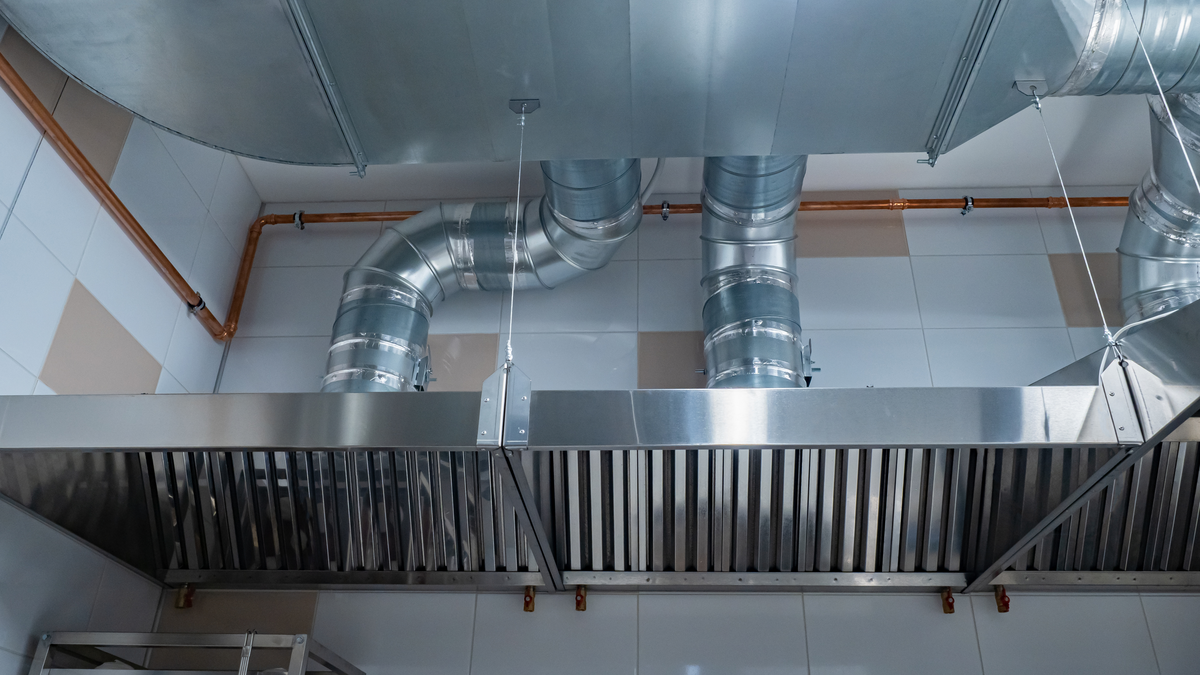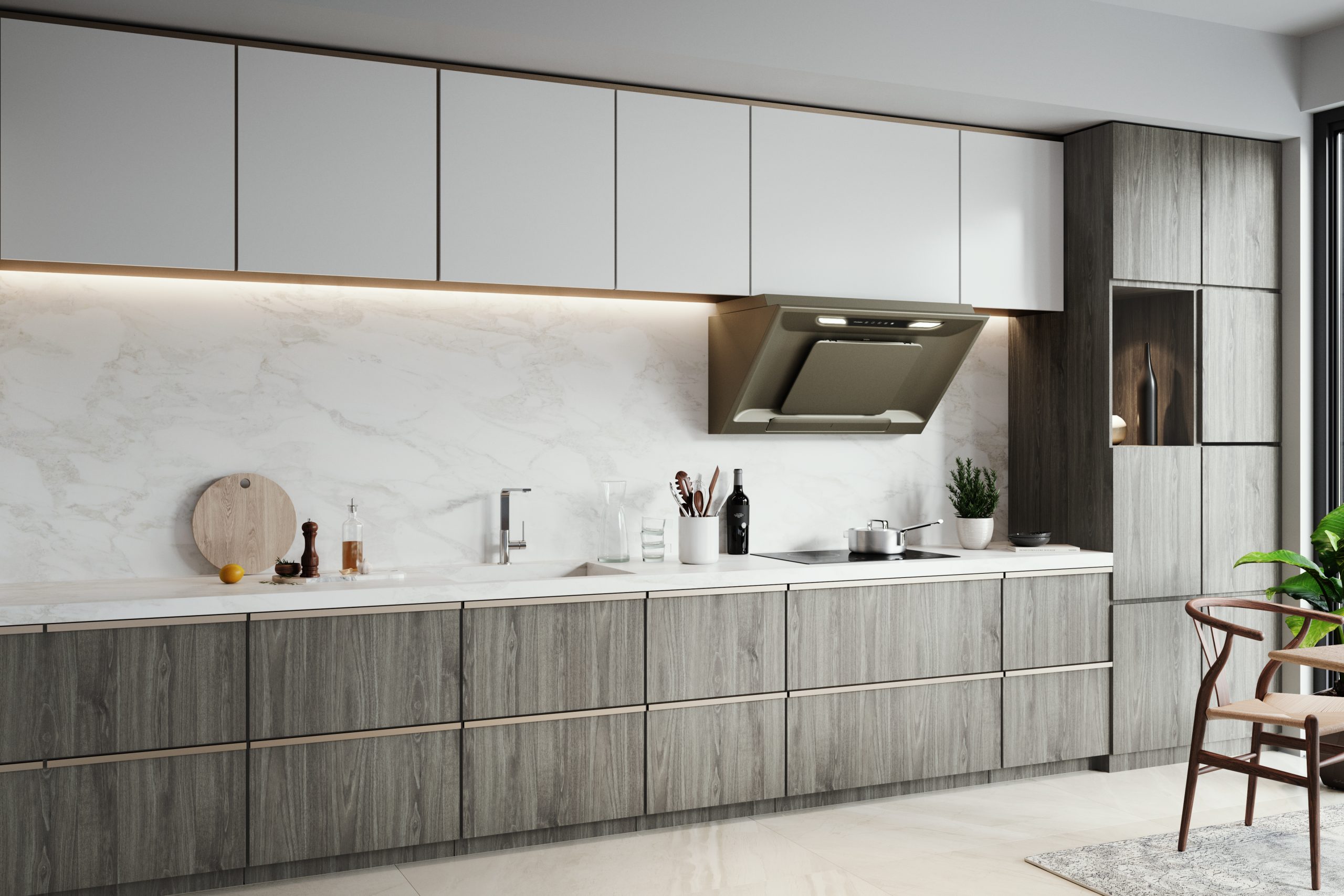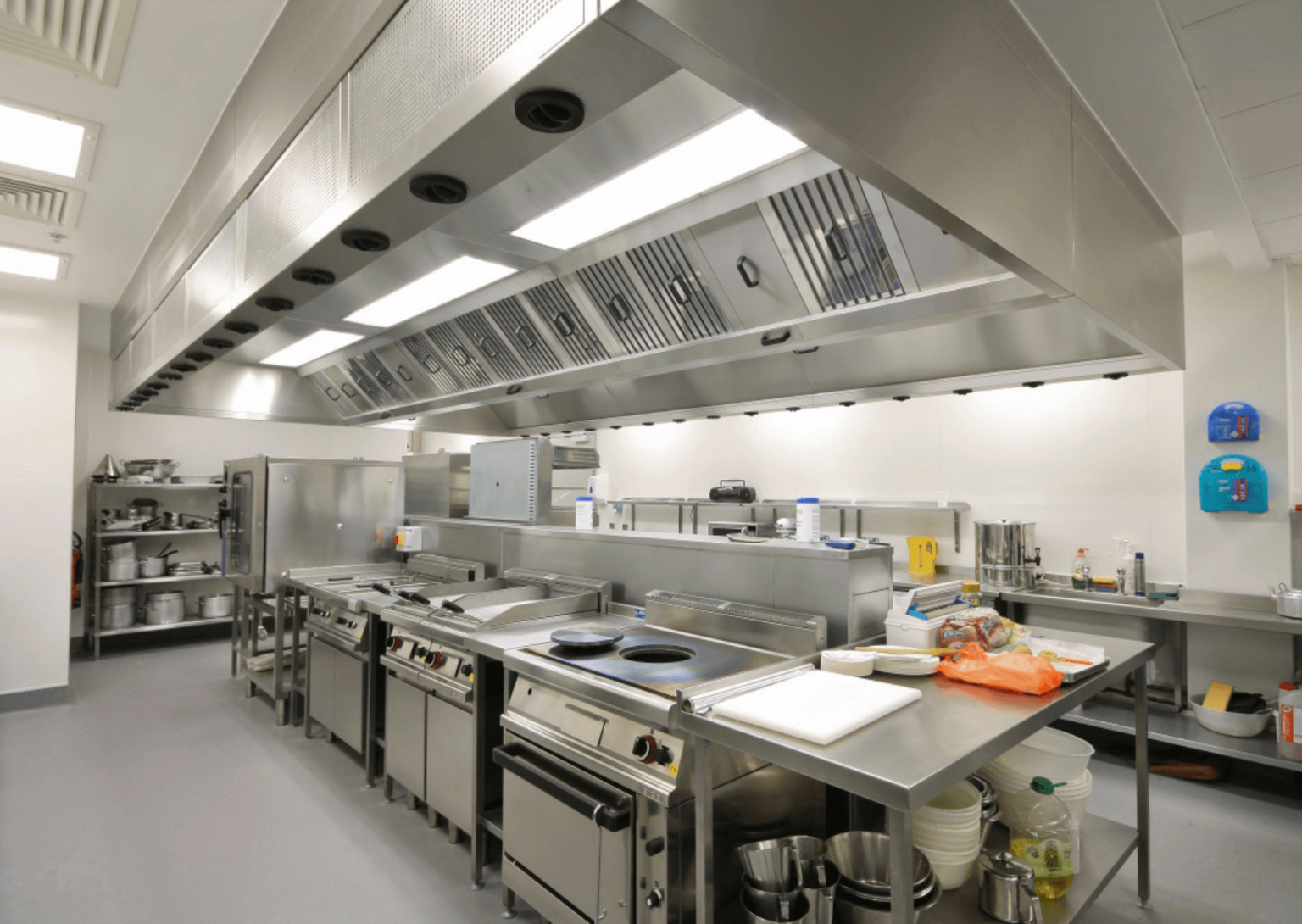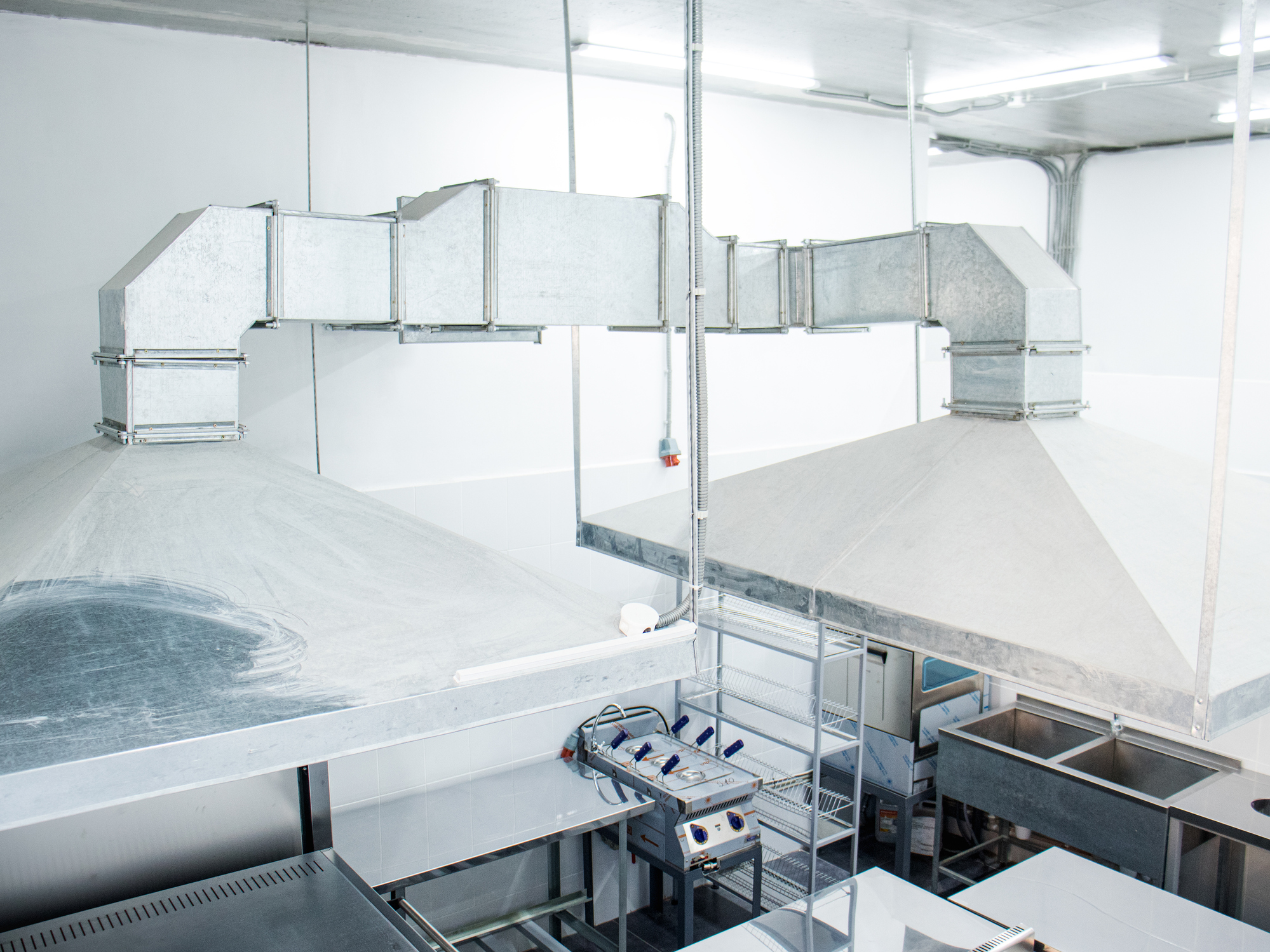In any commercial kitchen, proper ventilation is crucial for maintaining a safe and comfortable working environment. A well-designed ventilation system helps to remove heat, smoke, and other airborne contaminants from the kitchen, ensuring the health and safety of both employees and customers. When it comes to commercial kitchen hood design, ventilation is a key consideration that should not be overlooked. Effective ventilation design for commercial kitchens involves a combination of exhaust systems, fans, and ductwork. The goal is to create a continuous flow of fresh air while removing any unwanted odors, smoke, and grease from the cooking area. This not only keeps the kitchen environment clean, but it also prevents the buildup of harmful fumes and reduces the risk of fire hazards. When designing a ventilation system for a commercial kitchen, it’s important to consider the size and layout of the space, as well as the type of cooking equipment being used. For example, a larger kitchen with multiple cooking stations will require a more powerful exhaust system to effectively remove smoke and grease. Additionally, different types of cooking equipment, such as fryers or grills, may produce more smoke and require specialized ventilation solutions. Overall, proper ventilation design is a critical component of commercial kitchen hood design and should not be overlooked.1. Ventilation Design for Commercial Kitchens
The commercial kitchen hood and exhaust system are essential components of any commercial kitchen. The hood, also known as the canopy, is the large metal structure that hangs above the cooking equipment and collects the smoke, grease, and other airborne contaminants. The exhaust system, which includes the fan and ductwork, then removes these contaminants from the kitchen. When designing a hood and exhaust system for a commercial kitchen, it’s important to consider the type of cooking equipment being used, the size and layout of the kitchen, and the local building codes and regulations. The size of the hood and exhaust system should be proportionate to the cooking equipment and the amount of heat and smoke it produces. A larger kitchen with more powerful cooking equipment will require a larger exhaust system to effectively remove the smoke and grease. Additionally, the placement of the hood and exhaust system is crucial for optimal ventilation. The hood should be positioned directly above the cooking equipment, and the exhaust system should be designed to efficiently remove the contaminants from the kitchen without causing air currents that disrupt the cooking process. Proper hood and exhaust system design is essential for maintaining a safe and functional commercial kitchen.2. Hood and Exhaust System Design for Commercial Kitchens
For those looking to open a new commercial kitchen or upgrade an existing one, professional installation and design services for commercial kitchen hoods are essential. A professional service will ensure that all local building codes and regulations are met, and that the hood and exhaust system are properly sized and positioned for optimal ventilation. When choosing a commercial kitchen hood installation and design service, it’s important to look for a company with experience and expertise in this specific area. They should be able to provide a range of hood and exhaust system options to fit your kitchen’s specific needs and budget, as well as offer customization options for a truly tailored solution. Professional installation services will ensure that the hood and exhaust system are installed correctly and efficiently, saving you time and hassle. They can also provide ongoing maintenance and cleaning services to keep your ventilation system operating at its best.3. Commercial Kitchen Hood Installation and Design Services
When it comes to commercial kitchen hood design, there are some best practices that should be followed to ensure optimal ventilation and safety. These include proper positioning and sizing of the hood and exhaust system, as well as regular maintenance and cleaning. The hood should be positioned directly above the cooking equipment and should be at least 6 inches wider on each side to effectively capture smoke and grease. The exhaust system should be designed to remove contaminants without causing air drafts that disrupt cooking. Additionally, the hood and exhaust system should be regularly cleaned and maintained to prevent the buildup of grease, which can pose a fire hazard. It’s also important to choose a hood and exhaust system that is energy-efficient and meets all local building codes and regulations. By following these best practices, you can ensure that your commercial kitchen is properly ventilated and safe for employees and customers.4. Best Practices for Commercial Kitchen Hood Design
In addition to providing optimal ventilation and safety, energy efficiency is also an important consideration when it comes to commercial kitchen hood design. A well-designed hood and exhaust system can help to reduce energy costs and improve the overall sustainability of your kitchen. One way to achieve energy efficiency is by choosing a hood and exhaust system with variable speed controls. This allows for the system to adjust its speed based on the amount of smoke and heat being produced, reducing energy usage when it’s not needed. Additionally, investing in high-efficiency fans and using LED lighting can also contribute to a more energy-efficient ventilation system. Not only does an energy-efficient commercial kitchen hood design save money on energy bills, but it also demonstrates a commitment to sustainability and reducing your environmental impact.5. Energy-Efficient Commercial Kitchen Hood Design
For those looking for a truly unique and tailored commercial kitchen hood design, custom fabrication services are available. This allows for a more personalized hood and exhaust system that meets the specific needs and aesthetic of your kitchen. With custom fabrication, you can choose from a variety of materials, finishes, and designs to create a one-of-a-kind hood and exhaust system. This also allows for the incorporation of any specialized features or equipment that may be needed for your kitchen. While custom fabrication may come at a higher cost, it can provide a more functional and visually appealing solution for your commercial kitchen hood design.6. Custom Commercial Kitchen Hood Design and Fabrication
In addition to proper ventilation, fire suppression systems are a critical component of commercial kitchen hood design. These systems are designed to automatically detect and extinguish any fires that may occur in the cooking area, preventing them from spreading and causing damage or harm. When choosing a fire suppression system, it’s important to consider the type of cooking equipment being used and the size of the kitchen. Different types of cooking equipment may require different types of fire suppression systems, such as wet chemical or dry chemical systems. The system should also be regularly inspected and maintained to ensure its effectiveness in case of a fire. Investing in a quality fire suppression system for your commercial kitchen hood design is essential for the safety and protection of your kitchen and employees.7. Fire Suppression Systems for Commercial Kitchen Hoods
Proper ventilation is crucial in commercial kitchen hood design for several reasons. First and foremost, it ensures the health and safety of employees and customers by removing harmful fumes and reducing the risk of fire hazards. Additionally, ventilation also helps to maintain a comfortable working environment for employees by removing excess heat and odors. Proper ventilation also plays a role in the overall efficiency and functionality of a commercial kitchen. A well-ventilated kitchen allows for better air circulation, which can help to improve the cooking process and prevent the buildup of unwanted odors and grease. This, in turn, can also contribute to a more energy-efficient kitchen. Overall, proper ventilation is an essential consideration in commercial kitchen hood design and should not be overlooked.8. Importance of Proper Ventilation in Commercial Kitchen Hood Design
When designing a commercial kitchen hood and exhaust system, it’s important to ensure that all local building codes and regulations are met. These regulations are in place to ensure the safety and functionality of commercial kitchens and must be adhered to in order to receive proper certifications and permits. Some common regulations and codes to be aware of when designing a commercial kitchen hood include the type and size of the hood and exhaust system, the distance between the cooking equipment and the hood, and the ventilation requirements for the size of the kitchen. It’s also important to regularly check for any updates or changes to these regulations to ensure compliance. By following these regulations and codes, you can ensure that your commercial kitchen is safe and functional for both employees and customers.9. Commercial Kitchen Hood Design Regulations and Codes
When it comes to commercial kitchen hood design, one size does not fit all. It’s important to carefully consider the size and layout of your kitchen, as well as the type of cooking equipment being used, in order to choose the right size and type of hood and exhaust system. A larger kitchen with more powerful cooking equipment will require a larger hood and exhaust system to effectively remove smoke and grease. Additionally, the type of cooking equipment being used may require specialized ventilation solutions. For example, a kitchen with a high volume of frying may require a hood and exhaust system with a higher capture efficiency for grease. By carefully evaluating the needs of your kitchen, you can choose the right size and type of hood and exhaust system for optimal ventilation and safety.10. Choosing the Right Size and Type of Commercial Kitchen Hood for Your Space
The Importance of Proper Commercial Kitchen Hood Design

Creating a Safe and Efficient Working Environment
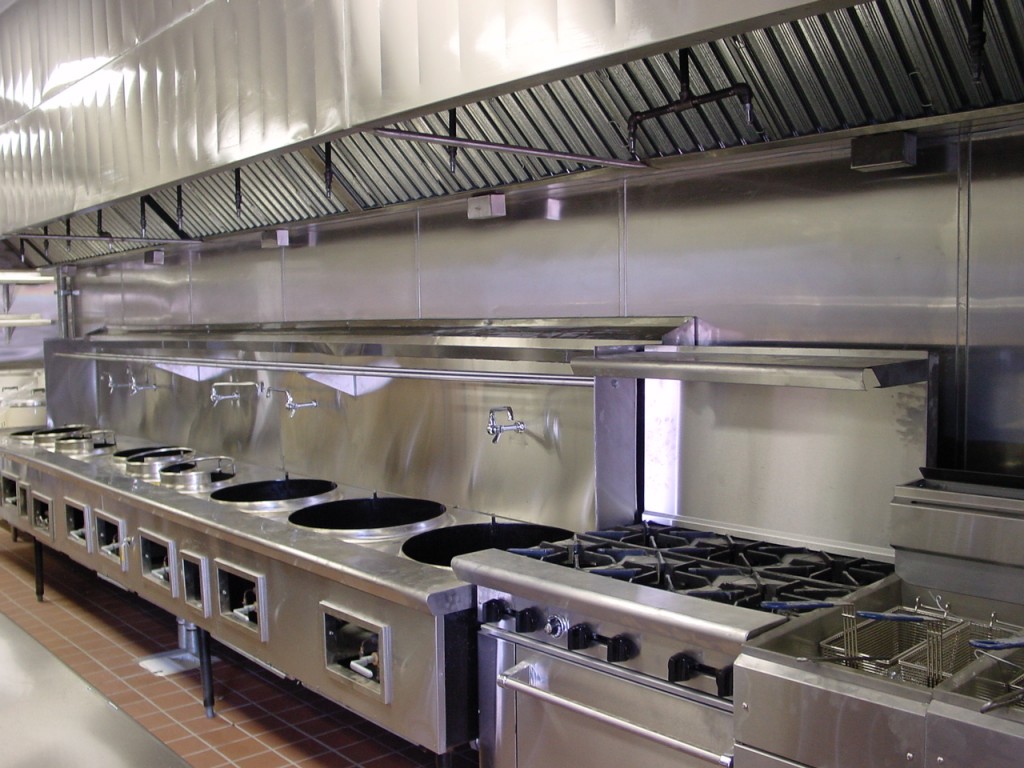 As any professional chef will tell you, a well-designed
commercial kitchen
is essential for a successful and efficient cooking experience. One of the most crucial elements of any commercial kitchen is the
kitchen hood
, also known as the
range hood
or
exhaust hood
. This vital piece of equipment is responsible for removing smoke, grease, heat, and other impurities from the air, creating a safe and comfortable working environment for chefs and kitchen staff.
As any professional chef will tell you, a well-designed
commercial kitchen
is essential for a successful and efficient cooking experience. One of the most crucial elements of any commercial kitchen is the
kitchen hood
, also known as the
range hood
or
exhaust hood
. This vital piece of equipment is responsible for removing smoke, grease, heat, and other impurities from the air, creating a safe and comfortable working environment for chefs and kitchen staff.
Factors to Consider in Commercial Kitchen Hood Design
 When it comes to designing a
commercial kitchen hood
, there are several factors that need to be taken into consideration. These include the size and layout of the kitchen, the type of cooking equipment being used, and the volume of cooking that will be taking place. Additionally, local building codes and regulations must also be adhered to, as not all kitchen hoods are suitable for every type of cooking establishment.
Proper Ventilation
One of the most crucial aspects of commercial kitchen hood design is ensuring proper ventilation. Without adequate ventilation, smoke, heat, and grease can quickly build up, creating an uncomfortable and potentially hazardous working environment. A well-designed
kitchen hood system
will not only remove these impurities from the air but also prevent them from settling on surfaces and equipment, reducing the risk of fire hazards and maintaining a clean and sanitary kitchen.
Efficient Airflow
Another essential consideration in commercial kitchen hood design is the airflow of the hood. The hood should be strategically placed above the cooking equipment, with enough clearance to capture all the smoke and fumes produced. It should also have enough power to effectively draw out the air and impurities from the kitchen. A poorly designed hood with inadequate airflow can lead to poor ventilation, resulting in an uncomfortable and potentially dangerous working environment.
Energy Efficiency
In addition to safety and functionality, energy efficiency is also a crucial factor in commercial kitchen hood design. With the rising costs of energy, it is essential to choose a hood system that is energy-efficient and will not add significantly to the overall operating costs. This can be achieved through the use of energy-efficient fans, LED lighting, and proper hood placement that minimizes the need for excessive ducting.
When it comes to designing a
commercial kitchen hood
, there are several factors that need to be taken into consideration. These include the size and layout of the kitchen, the type of cooking equipment being used, and the volume of cooking that will be taking place. Additionally, local building codes and regulations must also be adhered to, as not all kitchen hoods are suitable for every type of cooking establishment.
Proper Ventilation
One of the most crucial aspects of commercial kitchen hood design is ensuring proper ventilation. Without adequate ventilation, smoke, heat, and grease can quickly build up, creating an uncomfortable and potentially hazardous working environment. A well-designed
kitchen hood system
will not only remove these impurities from the air but also prevent them from settling on surfaces and equipment, reducing the risk of fire hazards and maintaining a clean and sanitary kitchen.
Efficient Airflow
Another essential consideration in commercial kitchen hood design is the airflow of the hood. The hood should be strategically placed above the cooking equipment, with enough clearance to capture all the smoke and fumes produced. It should also have enough power to effectively draw out the air and impurities from the kitchen. A poorly designed hood with inadequate airflow can lead to poor ventilation, resulting in an uncomfortable and potentially dangerous working environment.
Energy Efficiency
In addition to safety and functionality, energy efficiency is also a crucial factor in commercial kitchen hood design. With the rising costs of energy, it is essential to choose a hood system that is energy-efficient and will not add significantly to the overall operating costs. This can be achieved through the use of energy-efficient fans, LED lighting, and proper hood placement that minimizes the need for excessive ducting.
In Conclusion
 In the fast-paced, high-stress environment of a commercial kitchen, having a well-designed
kitchen hood
is essential for the safety and comfort of all those who work there. With the right design, a kitchen hood can effectively remove smoke, heat, and other impurities from the air, creating a safe and efficient working environment. By considering factors such as proper ventilation, efficient airflow, and energy efficiency, a commercial kitchen hood can be designed to meet the specific needs of any commercial kitchen.
In the fast-paced, high-stress environment of a commercial kitchen, having a well-designed
kitchen hood
is essential for the safety and comfort of all those who work there. With the right design, a kitchen hood can effectively remove smoke, heat, and other impurities from the air, creating a safe and efficient working environment. By considering factors such as proper ventilation, efficient airflow, and energy efficiency, a commercial kitchen hood can be designed to meet the specific needs of any commercial kitchen.

























